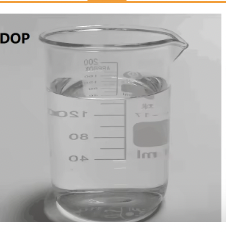Understanding the Impact of Plasticizers on PVC Performance
Plasticizers play a crucial role in transforming rigid polyvinyl chloride (PVC) into flexible, versatile materials used across numerous industries. These chemical additives fundamentally alter the mechanical properties of PVC by inserting themselves between polymer chains, increasing molecular mobility and creating a more pliable material. The interaction between plasticizers and PVC properties represents a cornerstone of modern polymer science, enabling manufacturers to tailor materials for specific applications ranging from medical devices to construction materials.
The relationship between plasticizers and PVC properties extends beyond simple softening effects. These additives influence everything from tensile strength and elongation to thermal stability and durability. Understanding these interactions is essential for engineers, manufacturers, and researchers working with PVC materials to optimize their performance characteristics for specific applications.
Fundamental Mechanisms of Plasticizer Action
Molecular Level Interactions
At the molecular level, plasticizers function by positioning themselves between PVC polymer chains, effectively increasing the free volume within the material. This spacing creates greater molecular mobility, reducing the glass transition temperature and allowing the polymer chains to move more freely. The process occurs through secondary bonding interactions, primarily van der Waals forces and hydrogen bonding, between the plasticizer molecules and the PVC chains.
The efficiency of these molecular interactions depends largely on the chemical compatibility between the plasticizer and PVC. More compatible plasticizers can achieve greater levels of incorporation into the polymer matrix, resulting in more pronounced effects on mechanical properties. This compatibility is influenced by factors such as molecular size, polarity, and chemical structure of the plasticizer.
Physical Property Modifications
The introduction of plasticizers into PVC results in significant changes to its physical properties. The most immediate effect is a reduction in the material's stiffness and an increase in flexibility. This occurs as the plasticizer molecules reduce the intermolecular forces between polymer chains, allowing them to slide past one another more easily under stress.
The degree of plasticization directly correlates with the concentration of plasticizer used, allowing manufacturers to fine-tune the material's properties. Higher plasticizer concentrations generally result in softer, more flexible materials, while lower concentrations maintain more of the original rigid characteristics of PVC.
Impact on Specific Mechanical Properties
Tensile Strength and Elongation
The addition of plasticizers significantly affects the tensile properties of PVC. As plasticizer content increases, tensile strength typically decreases while elongation at break increases substantially. This trade-off between strength and flexibility is a key consideration in material selection for specific applications.
The relationship between plasticizer content and tensile properties is not linear. Initial additions of plasticizer cause dramatic changes in properties, but the effect tends to level off at higher concentrations. This allows manufacturers to optimize the balance between strength and flexibility for specific applications.
Impact Resistance and Toughness
Plasticizers enhance the impact resistance of PVC by improving its ability to absorb and dissipate energy through deformation rather than brittle failure. The increased molecular mobility allows the material to distribute impact forces more effectively, reducing the likelihood of catastrophic failure.
The improvement in toughness is particularly valuable in applications where the material must withstand repeated impacts or stress cycles. However, the degree of improvement depends on both the type and concentration of plasticizer used, as well as environmental conditions such as temperature.
Environmental and Performance Considerations
Temperature Effects
The influence of plasticizers on PVC properties varies significantly with temperature. At lower temperatures, plasticized PVC may become stiffer and less flexible as molecular mobility decreases. Conversely, higher temperatures can lead to increased plasticizer migration and potential changes in mechanical properties over time.
Understanding these temperature-dependent behaviors is crucial for applications where materials must perform consistently across a range of environmental conditions. Proper selection of plasticizer type and concentration can help minimize these temperature-related effects.
Aging and Durability
Long-term exposure to environmental factors can affect the stability of plasticized PVC systems. Plasticizer migration, oxidation, and UV exposure can all contribute to changes in mechanical properties over time. These aging effects may manifest as increased stiffness, reduced flexibility, or surface degradation.
To maintain consistent mechanical properties throughout the material's service life, manufacturers must carefully consider plasticizer stability and retention. This often involves selecting appropriate stabilizers and optimizing formulations to minimize aging effects.
Frequently Asked Questions
What determines the effectiveness of a plasticizer in PVC?
The effectiveness of a plasticizer depends on several factors, including its chemical compatibility with PVC, molecular size, polarity, and concentration. The plasticizer's ability to form stable secondary bonds with PVC chains while maintaining adequate mobility within the polymer matrix determines its overall impact on mechanical properties.
How does plasticizer content affect processing conditions?
Plasticizer content significantly influences processing parameters such as mixing temperature, processing time, and equipment requirements. Higher plasticizer levels generally lower processing temperatures and reduce energy requirements, but may require adjusted processing conditions to maintain product quality.
Can mechanical properties be restored if plasticizer loss occurs?
While some degree of mechanical property restoration is possible through the reintroduction of plasticizers, complete recovery may be difficult to achieve. Prevention through proper plasticizer selection and stabilization is generally more effective than attempting to restore properties after degradation has occurred.

